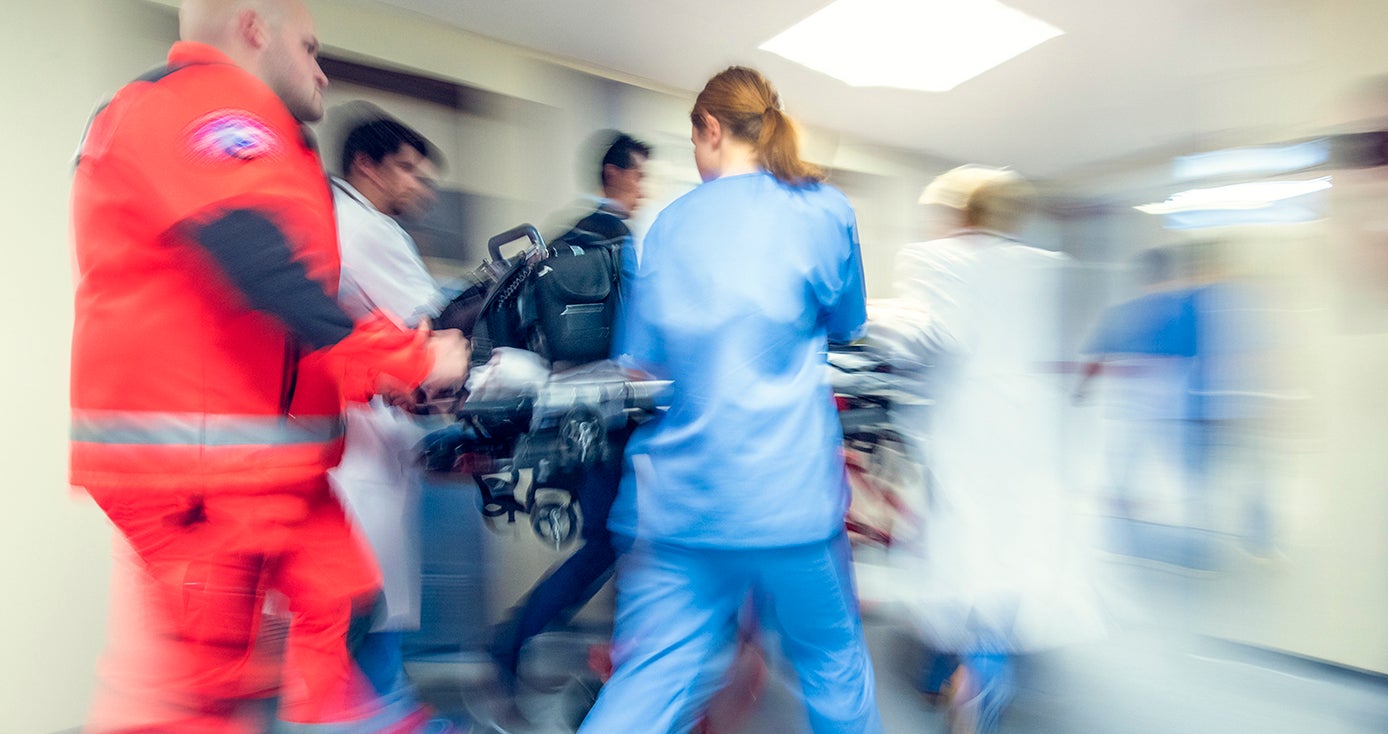
Subscribe to Pittwire Today
Get the most interesting and important stories from the University of Pittsburgh.New National Guidelines Aim to Combat Fatigue in Emergency, Shift Workers
Daniel Patterson, an assistant professor of emergency medicine, has worked as an emergency medical technician (EMT) and paramedic on nights and weekends, in conjunction with his research job at the University of Pittsburgh, so he can attest to safety challenges emergency workers face every day — especially fatigue.
“Have I been in a situation where fatigue has been a factor? Absolutely. Have I made a mistake? No, luckily not, but I’ve had tons of near misses,” said Patterson, who aided patients and drove ambulances in North Carolina before coming to Pittsburgh. “I’ve caught myself nodding off (as an EMT), and if I would have fallen asleep behind the wheel, who knows what would have happened?”
In light of these experiences, Patterson, along with Christian Martin-Gill and others at Pitt, created guidelines for emergency medical services (EMS) facilities to mitigate fatigue and improve safety and health for the more than 800,000 workers and 21,000 agencies nationwide.
Patterson and 24 other co-investigators reviewed more than 38,000 studies of shift workers published between 1980 and 2016, examining dangers associated with being an airline pilot, military personnel, railroad operator, trucker, healthcare shift worker and others.
“Our goal was to identify all relevant literature that involves those who work in the shift work setting and are exposed to the dangers associated with shift work, fatigue, poor sleep and other threats to safety,” Patterson said. The research was funded by the National Highway Traffic Safety Administration in partnership with the National Association of State EMS Officials.
The findings from the review were presented to an expert panel that deliberated the evidence before reaching consensus on five evidence-based recommendations for EMS agencies to use when developing fatigue risk management programs and structuring shift work.
Their report cites evidence that half of EMS personnel get fewer than six hours of sleep per day and half also report inadequate recovery time between shifts.
“All we have to do is pick up the news media from the past several years, and we can find plenty of examples where a paramedic or EMT who was driving an ambulance fell asleep behind the wheel and crashed,” said Patterson.
The Evidence Based Guidelines for Fatigue Risk Management in Emergency Medical Services, which were published in the journal Prehospital Emergency Care earlier this year, recommend the following to administrators of EMS personnel:
- Use surveys to measure and monitor EMS personnel fatigue.
- Limit EMS shifts to less than 24 hours in duration.
- Give EMS personnel access to caffeine to help stave off fatigue.
- Allow EMS personnel the opportunity to nap while on duty.
- Provide education and training in fatigue risk management to EMS personnel.
While these guidelines specifically address EMS conditions, Patterson said his team has been in contact with leaders from other high-risk, shift-related industries, including trucking, rail, oil refinery, nuclear power and aviation among others.
“Most high-risk industries use fatigue risk management to some degree. At some point, the administrators of these industries decided fatigue is a problem, Patterson said. “However, they never took the necessary steps to review the evidence linked to multiple mitigation strategies and use the findings for purposes of creating an evidence-based guideline.”
He added, “Our work will serve as a guide for other industries that seek to tailor fatigue-mitigation strategies to their needs and develop a guideline for fatigue mitigation specific to their field or occupation. The evidence-based guidelines that we produced will improve safety for patients, EMS clinician shift workers, and the public.”


